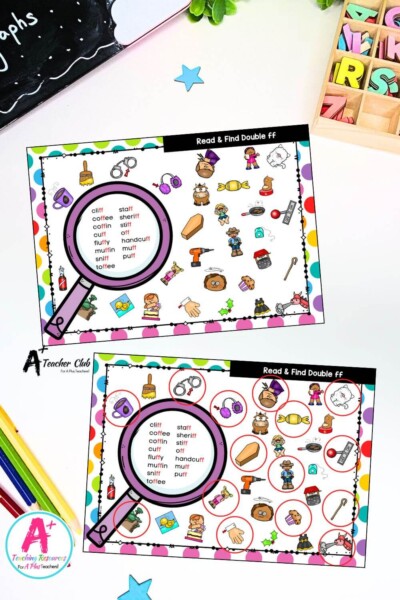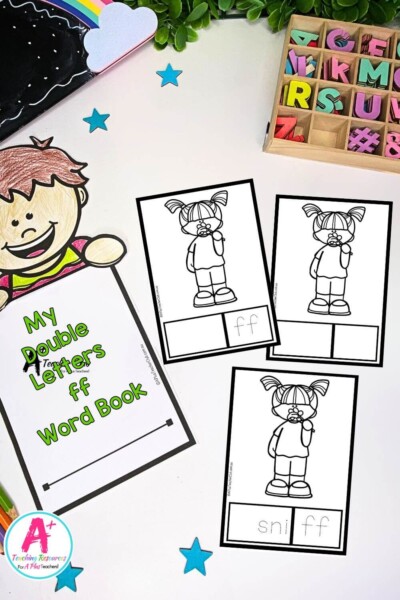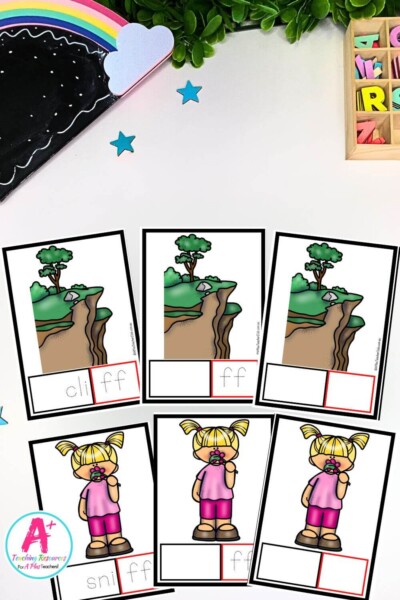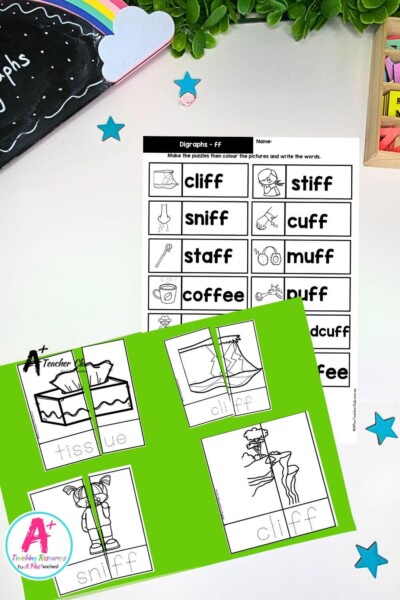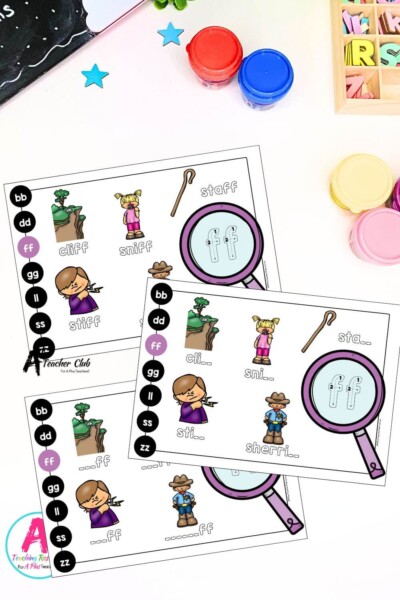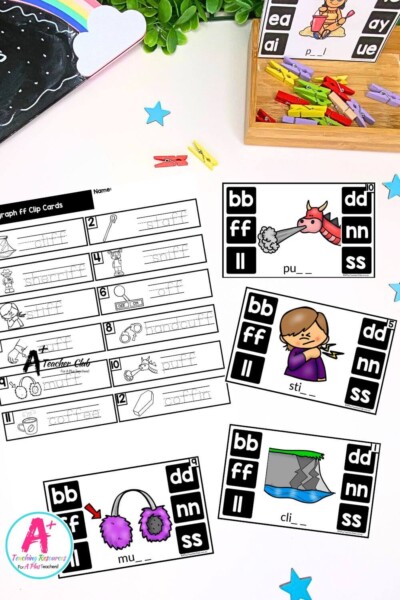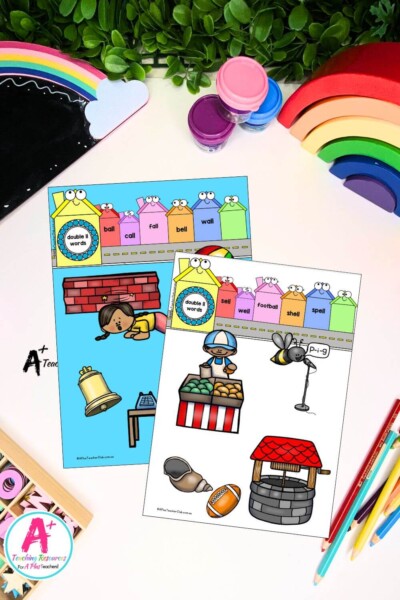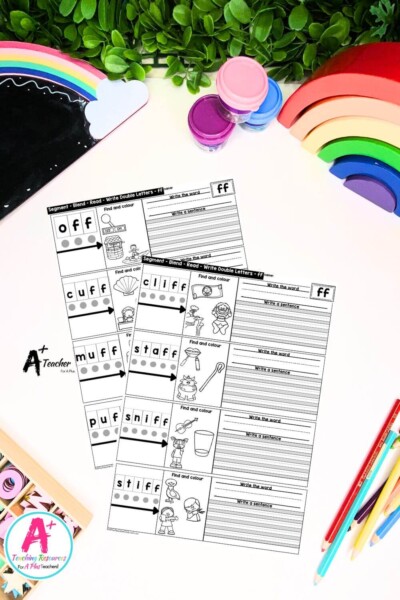Teaching Double Consonants “ff”
Phonics, Spelling, & Grammar Resources
Teaching spelling and phonics can be challenging, especially when it comes to Teaching Double Consonants “ff” Rules. However, understanding this rule is crucial for students to develop strong spelling skills. In this comprehensive guide, we’ll explore the ins and outs of the double “FF” consonant rule, provide examples, and address common issues and confusions students may encounter. You’ll also find a stack of fun and engaging resources to help your learners master double consonants as well as handy hints and info for Teaching Double Consonants.
The Double “ff” Consonant Rule FLOSS Rule
Using spelling rules is a great way for students to learn when to use double letters in their spelling and writing and there are two to teach them about when and how to use double “ff” in words; the FLOSS Rule and the Double Consonant ‘ff’ Rule.
Knowing when to use double “ff” at the end of a word comes down to understanding certain spelling rules and one of these rules is the FLOSS Rule.
The FLOSS Rule is a mnemonic used to remember when to double the final consonant at the end of one-syllable words after a short vowel sound.
which says that in one-syllable words, if a vowel is immediately followed by “f,” “l,” “s,” or sometimes “z,” you double the final consonant. This helps keep the vowel short and the pronunciation clear.
For example, in the word “fluff,” we double the “f” because the vowel “u” is immediately followed by “f.” Without the double “f,” the word would be pronounced differently. So, the double “ff” helps us spell words in a way that matches their pronunciation and keeps things consistent in English spelling.
So now let’s talk about the Final Double “ff” Consonant Rule. It’s pretty straightforward, actually. If you’ve got a word that already ends in a double “ff” and you want to add on something like “-ed” or “-ing,” you don’t need to change a thing!
For example, let’s take the word “puff,” if we want to say “puffed” or “puffing,” we still keep that double “ff,” giving us “puffed” and “puffing.”
Double Consonant “ff” Word Lists
“ff” Words Used in our resources
Common Issues and Confusions
Despite the straightforward rule, students may encounter some issues and confusion when learning about the double “ff” consonant rule. Let’s address them:
1. Overgeneralisation:
- Issue: Students may incorrectly apply the rule to words where the final syllable is not stressed, leading to misspellings.
- Solution: Provide ample practice opportunities and emphasize the importance of recognising stress patterns in words before applying the rule.
2. Lack of Phonemic Awareness:
- Issue: Students may struggle to identify short vowel sounds, leading to difficulties in determining when to double the “F.”
- Solution: Incorporate phonics activities and exercises focused on short vowel sounds to improve students’ phonemic awareness.
3. Memorisation of Exceptions:
- Issue: Students may find it challenging to memorise exceptions to the rule, such as words where the final syllable is stressed but the “F” is not doubled.
- Solution: Highlight common exceptions like “belief,” “chef,” and “calf,” and provide mnemonic devices or word association techniques to aid memorization.
By understanding the rules, providing examples, and addressing common issues and confusions students will develop strong spelling skills.
Resources listed in this collection
Click to jump to...-
Double Consonants Feed Me Dogs
-
Double Consonants I Spy Read & Find - ff
-
Double Consonant Student Book - ff
-
Double Consonant Flash Cards - ff
-
Double Consonant Colour 2 Piece Puzzles - ff
-
Double Consonant B&W 2 Piece Puzzles - ff
-
Double Consonant Word Builder - ff
-
Double Consonants Word Search - ff
-
Double Consonant Playdough Mats - ff
-
Double Consonant Crown Craft - ff
-
Double Consonant Writing Mats - ff
-
Double Consonant Strip Puzzles - ff
-
Double Consonant Clip Cards - ff
-
Double Consonant Strip Reader - ff
-
Double Consonant Board Game - ff
-
Double Consonant Posters - ff
-
Double Consonant Worksheets - ff
-
Double Consonant Spin & Spell - ff
Double Consonant Resources - ff
Explore tags
More Double Consonant Activities

Double Consonants - mm

Double Consonants - tt
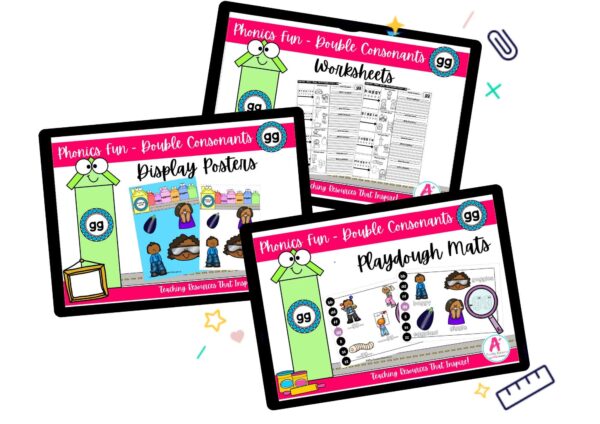
Double Consonants - gg

Double Consonants - dd
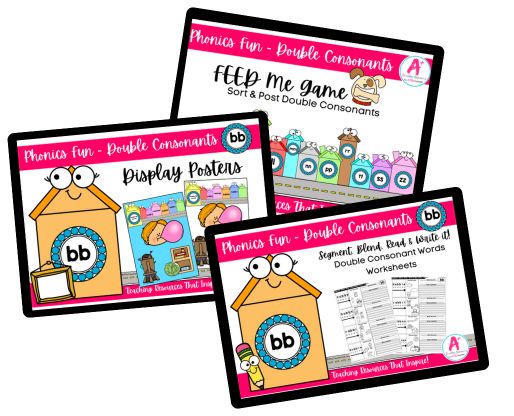
Double Consonants - bb

Double Consonants - zz
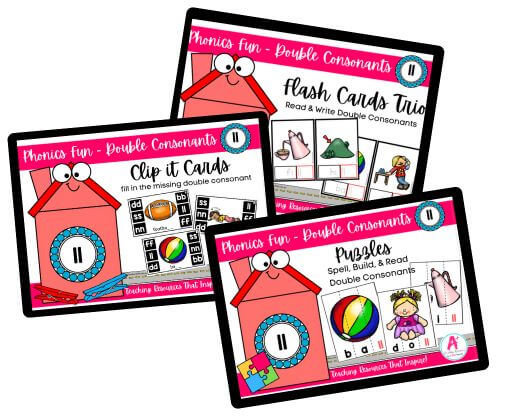
Double Consonant - ll
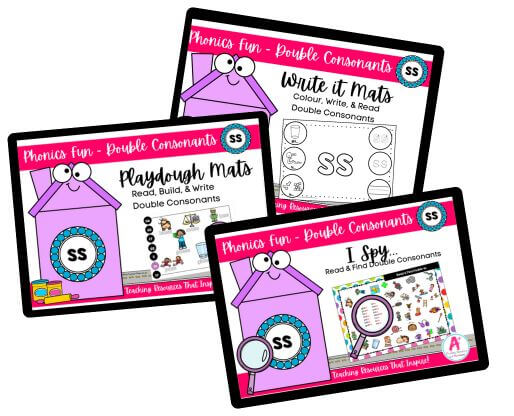
Double Consonants - ss
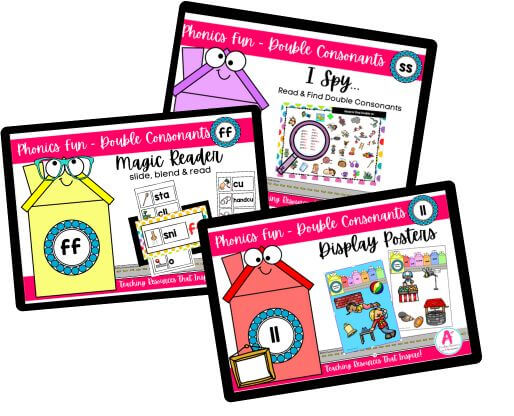
Double Consonants Collections
Can't find what you're looking for?
Send us a request! Use this form to request a resource. Please give details of the learning area, topic, year level, curriculum links. We’ll be happy to take a look to see if we can fit it in. Unfortunately a request does not guarantee we will be able to make it!
"*" indicates required fields


